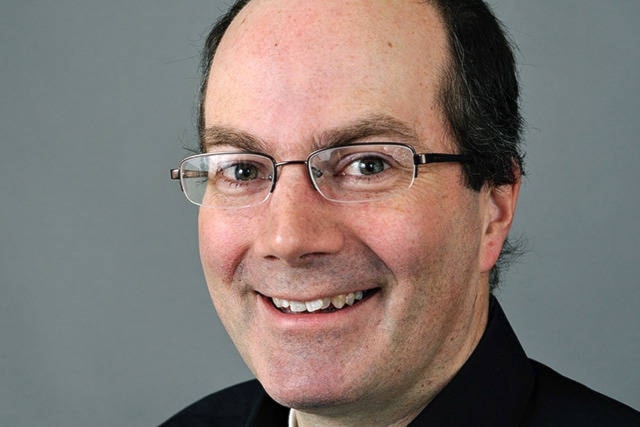Sometimes you hear people say that the Yukon is a great place to reconnect with nature and what’s important in life, and get away from the frenzy of modern consumerism.
That’s not what the debt markets think of us. The average Yukoner aged 18 or over paid $3,039 in interest in 2019, not too far below the national average of $3,376. And our debt payments have been growing slightly faster over the last five years.
We’re often keen to tell our neighbours about our new mountain bike, kitchen renovation or boat. But you don’t often hear people sharing their debt-service ratios at backyard barbecues.
Traditionally, we’ve been conflicted about debt. Accountants will counsel caution. Grandparents, remembering hard times, may advise the kids to avoid it. English majors may quote Polonius advising his son in Hamlet before a big trip to Paris: “Neither a borrower nor a lender be.”
On the other hand, advertising relentlessly pushes us to borrow and spend. One of the many perils of social media is being bombarded with images of friends doing fun things with expensive toys.
But now, COVID-19 has upset whatever delicate balance we had found between prudence and profligacy. Debt is just so darn cheap as central banks pump money into the economy.
The Bank of Canada’s bank rate is just half a percentage point. Younger Yukoners may not realize how low that is. The Bank Rate was 4.75 percent just before the global financial crisis and hit a punishing 21.03 percent during the 1981 recession that crushed the Yukon economy.
The bank doesn’t expect to be in a position to raise rates until sometime in 2023.
The federal government can borrow money for ten years at just one per cent. You can get a deal almost as good. One bank on Main Street is offering mortgages at just 1.75 per cent (five-year variable closed).
A $300,000 mortgage at this rate results in a monthly payment of $1,234. If you were paying around seven per cent like people were before the global financial crisis, the monthly payment would be $2,101. If the rate was 21 percent, like some Yukoners in 1981 were paying, it would be $5,086.
Money is cheap for households, businesses and governments. It makes sense to rethink your approach to debt.
There is, however, a “but.” The economic weather forecast for debt may be unusually sunny, but the laws of economic gravity have not been repealed.
Debt is a useful tool, like electricity or gasoline. Used carefully, you get bright lights and fast cars. Used carelessly, you get zapped or incinerated.
So, yes, your household probably can afford a more expensive house than a few years ago. But you have to ask yourself some questions. Do you really need that extra bedroom or bigger garage? What is the risk of getting laid off or your employer going bankrupt and, if it happens, how long can you keep paying the mortgage?
Your bank will be stress-testing your ability to pay the mortgage if rates go up. But you should do the same. And given how uncertain the economic outlook is, it’s worth considering whether you should lock in current low rates for five years even if it is more expensive.
Like flying in a floatplane, it’s also smart to know where the escape hatch is. If house prices keep going up, then if you get over-extended you can always sell your house and move back into something smaller. Given the prices for used snowmobiles on Kijiji, you might even make a few bucks selling your toys. But in the unlikely event of some spike in interest rates, what if house prices actually go down?
This brings up boring old concepts such as large down payments and rainy day cash reserve funds.
For business, the questions are even more complicated. You may have debt accumulated during the pandemic. Refinancing at lower rates, if you can, is a good idea. Corporate Canada issued bonds at an unprecedented rate in 2020, doing just this.
Depending on your line of business, this may be an unprecedented opportunity to invest in new assets and equipment. Some industries are booming despite or even because of the pandemic, while others are looking forward to a post-vaccine boom in demand. Companies of all sizes around the world are investing in new digital technologies, labour-saving automation and internal systems to be more competitive.
Governments have also been throwing old fiscal rule books out the window. If the current Yukon government chooses to call an election this spring, I expect all the parties to be campaigning on ways to borrow to pre-spend future transfer payments. The 2017 Yukon Financial Advisory Panel report is now like a mildly embarrassing family photo relegated to a spot on the basement wall.
Cheap debt presents all of us with lots of opportunities. But before signing on the dotted line, it’s worth thinking twice. You might even want to talk to a Yukoner who had to pay the mortgage in 1981.
Keith Halliday is a Yukon economist and author of the MacBride Museum’s Aurore of the Yukon series of historical children’s adventure novels. He is a Ma Murray award-winner for best columnist and received the bronze for Outstanding Columnist in the 2019 Canadian Community Newspaper Awards.
